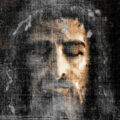
There are a variety of poor arguments against the reform of the reform (of certain changes made “in the spirit” of Vatican II). One of the interesting (and false) arguments is that the changes restored liturgical practices of the early Church.
Michael Foley debunks these myths in an interesting article recently published on Crisis Magazine:
1. Mass facing the people. After studying free-standing altars in early churches, liturgists in the 1930s concluded that priests once celebrated Mass “facing the people,” and that it was only under the influence of decadent medieval clericalism that they “turned their backs” to them. This myth was much in the drinking water at the time of Vatican II (1962-1965). Later, some scholars began to reexamine the evidence and found that it did not support their thesis at all, and that in fact there had been an unbroken tradition — both East and West — of priest and congregation celebrating the Eucharist in the same direction: eastward.
[…]
2. Communion in the hand and under both kinds. Myths about Holy Communion follow a similar pattern. Fifty years ago, the claim that “Communion in the hand” was the universal practice of the early Church was believed by everyone, even by those who didn’t wish to see the practice resuscitated. Now we’re not so sure. What we can say is that some early Christian communities practiced Communion in the hand, but Communion on the tongue may be just as ancient. And when Communion in the hand was practiced, the communicant received from a priest (and only a priest), most likely by putting It in his mouth without his other hand touching it. And in some places, a woman’s hand had to be covered with a white cloth!
[…]
3. The vernacular. Another widespread myth is that the early Church had Mass “in the vernacular.” But when Jesus worshipped in the synagogue, the language used was Hebrew, which had already been dead for 300 years. And for the first three centuries in Rome, the Mass was mostly celebrated in Greek, not Latin, which was only understood by a minority of the congregation.
[…]
4. Lay ministry. Another perduring myth is the idea that the laity were “more involved” in the Mass than they were in later ages. In our own day, this has spawned a multiplication of liturgical ministries for lay folk, such as lector, etc. The reality is that in the early Church, all of these roles were administered by the clergy. In fact, the early Church had more ordained clerical offices (the former minor orders) than it does today. The Council of Nicea in 325, for instance, talked about fine-tuning the office of “subdeacon.” This tells us one thing: that subdeacons were already a fixture in the landscape before the council was convoked. Lay Eucharistic ministers were not.
5. The pre- vs. post-Constantinian Church. Lurking behind all of these myths is a powerful “meta-myth,” the claim that there was a rupture in the life of the Church after the Emperor Constantine legalized Christianity in the fourth century. The Church before Constantine, the meta-myth goes, was simple and pristine, a Church “of the people.” After Constantine, however, the Church became clericalist, hierarchical, and corrupted by the desire for grand buildings and highfalutin” ceremonies.
[…]
Read the whole article at Crisis Magazine: Five Myths About Worship in the Early Church.

















